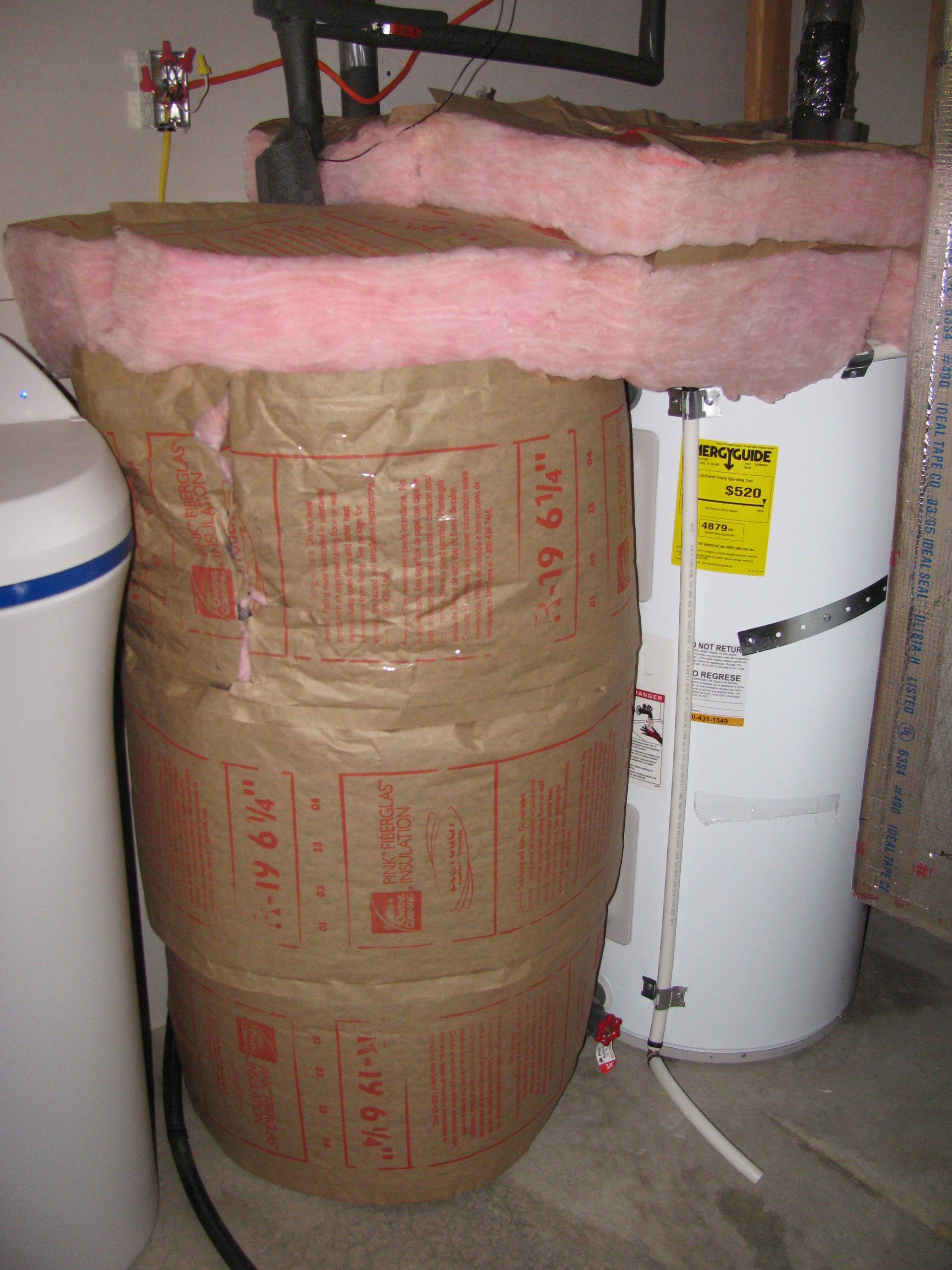Published Monday September 30, 2013: Updated October 29, 2021
Today's tank water heaters are well insulated but they are far from perfect. They still lose incredible amounts of energy each day.
A typical, modern, electric water heater tank loses 1.4 kWh of energy every day.
A typical natural-gas powered water heater tank loses an equivalent of 1.4 kWh in stand-by heat-loss (and probably much more up the flu) plus 289 watts of continual, energy in its pilot light. That is a total of at least 8.3 kWh of equivalent energy lost each day.
Did you know in 1 year, the equivalent stand-by energy loss in:
- An electric water-heater tank could power an EV over 2,500 miles.
- A natural gas water-heater tank could power an EV over 15,000 miles.
Wow!
Granted EVs are super efficient but still, that's a lot of wasted energy.
Instant Hot Water Heaters
This is why the instant hot water heaters are so energy efficient. They don't have any storage tank so they don't have any stand-by losses. The natural gas instant hot water heaters don't have a pilot light that wastes tons of energy 24-7 either.
The only problem with instant hot water heaters is they are very expensive to buy and require incredible amounts of energy while they are running. Often the gas pipes need to be sized up to handle their insatiable appetite during their violent binge on natural gas.
An electric, 5.3 gpm, whole house, instant-hot water heater draws upwards of 27 kW of power. While they are energy efficient, if every household had one, the power grid would go down each morning while everyone is bathing.
While it is unlikely that an instant hot-water heater would actually take down the power grid, it is good to consider the possibility and design to avoid it. Personally, I want to have the option of one day being able to power everything in the house on a sustainable, solar powered, battery backed up system. Heating, air conditioning, hot water, lighting, appliances and electric vehicles. This would not be possible with a large, on-demand water heater.
A Better, More Affordable Alternative:
Taking a regular, inexpensive, tank water heater and hyper-insulating it results in a near perfect storage of hot water with very low stand-by losses. It's like getting the efficiency of a tank-less water-heater without the added expense and without burdening the natural gas or electric infrastructure.

Active electric water heater (left) and passive water tank (right) before any additional insulation was added
While you can insulate a gas water heater, caution must be exercised to prevent blocking the air flow to the gas powered burner and its exhaust pipe.
Even though in the state of Utah, natural gas is almost 4x cheaper than electricity, I now prefer electric water heaters over gas ones for several reasons:
- They don't cost much.
- They don't cost much to replace the heating element.
- They don't have pilot light standby losses (289 watts continuous, 8.3 kWh/day or 7.6 therms per month).
- They can be wired to a switch so they can be turned on and off quickly (super vacation mode).
- They are also way easier to monitor power/energy consumption.
- They are super easy to hyper-insulate (effectively making them as efficient as an on-demand water heater).
- They won't kill you if there is an exhaust leak.
- They won't blow up your house if there is a gas leak.
- You can power them with renewable energy, even your own solar panels.
- No moral dilemma caused by using natural gas that may come from leaky, environmentally devastating, fracked-wells.

Active electric water heater is now insulated. Passive tank (right) is not.
Wrapping a $19 batt of R-19 insulation around an electric water heater reduces its stand-by loses from 1.4 kWh to 0.5 kWh per day.
1.4 kWh per day is equivalent to a 60 watt light-bulb or efficient refrigerator.
A standby loss of 0.5 kWh per day is like 20.8 watts or a laptop computer running continuously.
This simple insulation addition saves 328.5 kWh per year (about $35 annually). That's enough to power an electric car over 1600 miles.
As of October 2013, Kaysville electricity rates are:
- <= 1000 kWh/month: $0.0928 /kWh
- > 1000 kWh/month: $0.1120/kWh
An Electric Water Heater in Conjunction with a Heat-pump
It didn't initially make much sense to go through the effort of hyper-insulating the passive tank. But by the summer time, the hot-water generator inside the geothermal heat pump was contributing enough energy to keep passive tank at well over 100 degrees.

Wrapped the passive tank (right) with R-19 insulation.
Even though natural gas is much cheaper than electricity (in the state of Utah), through water-saving tips
and hyper-insulating, electric tank water heaters actually cost less to operate and may pollute less than a natural gas one.
